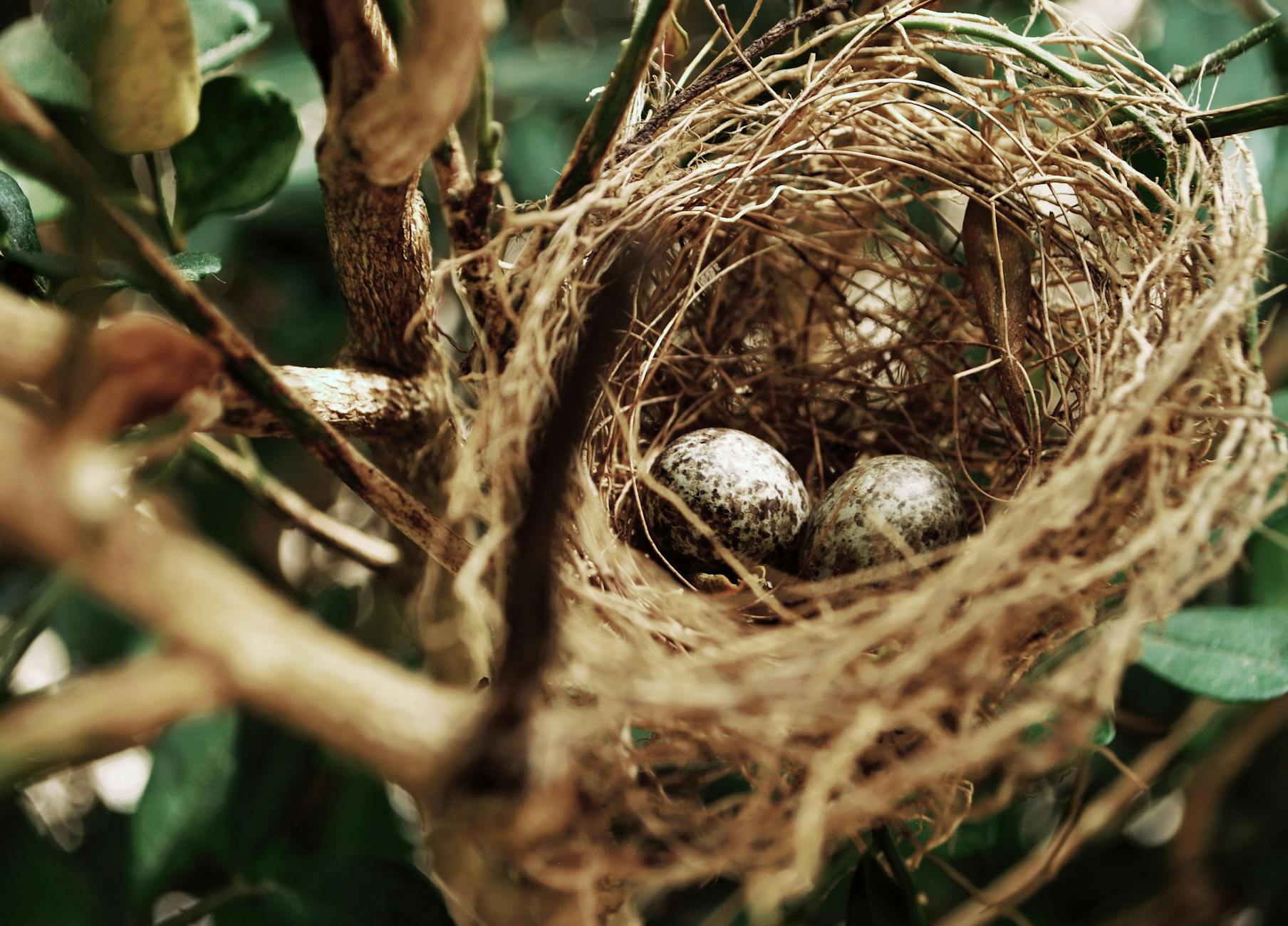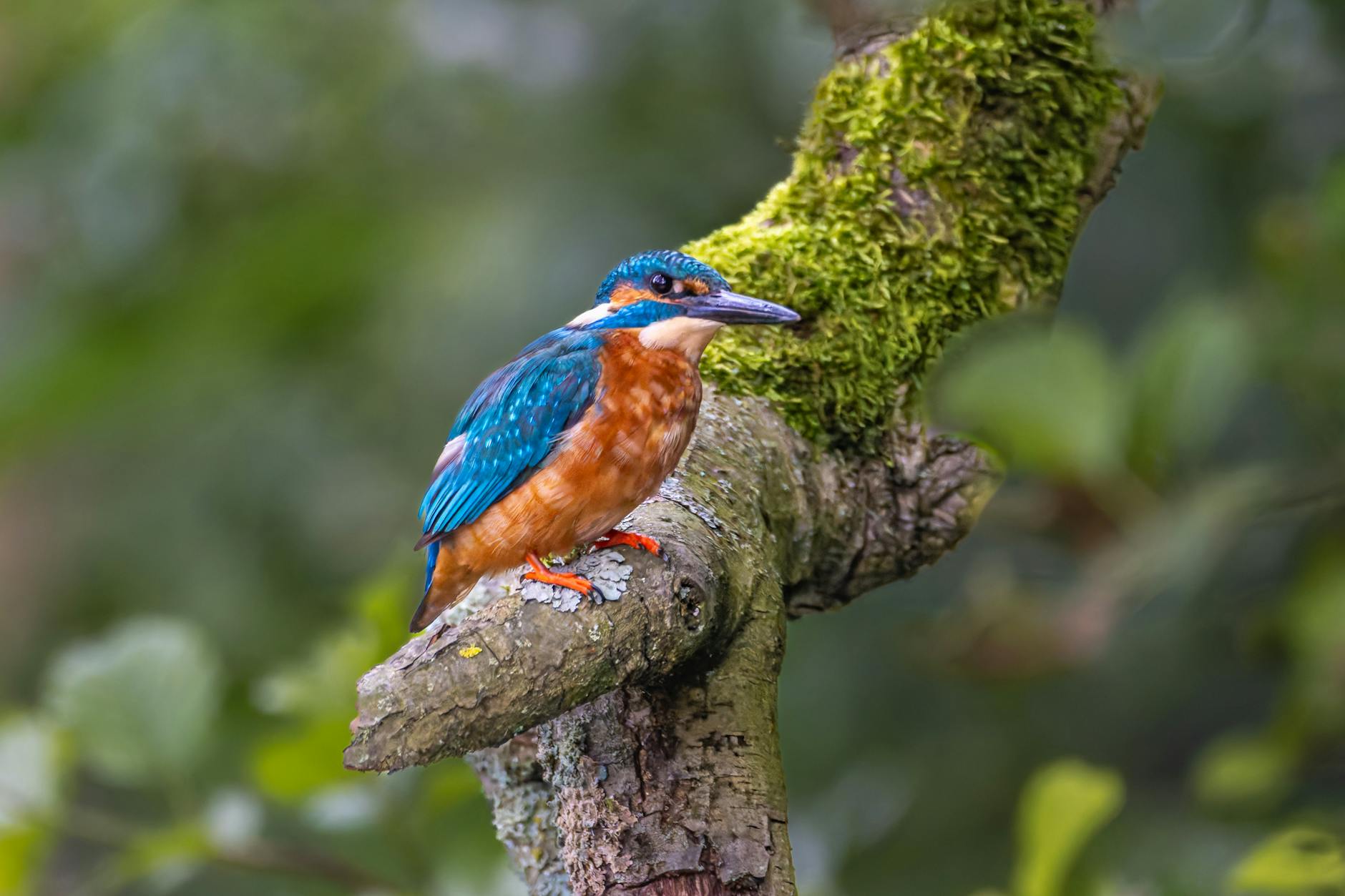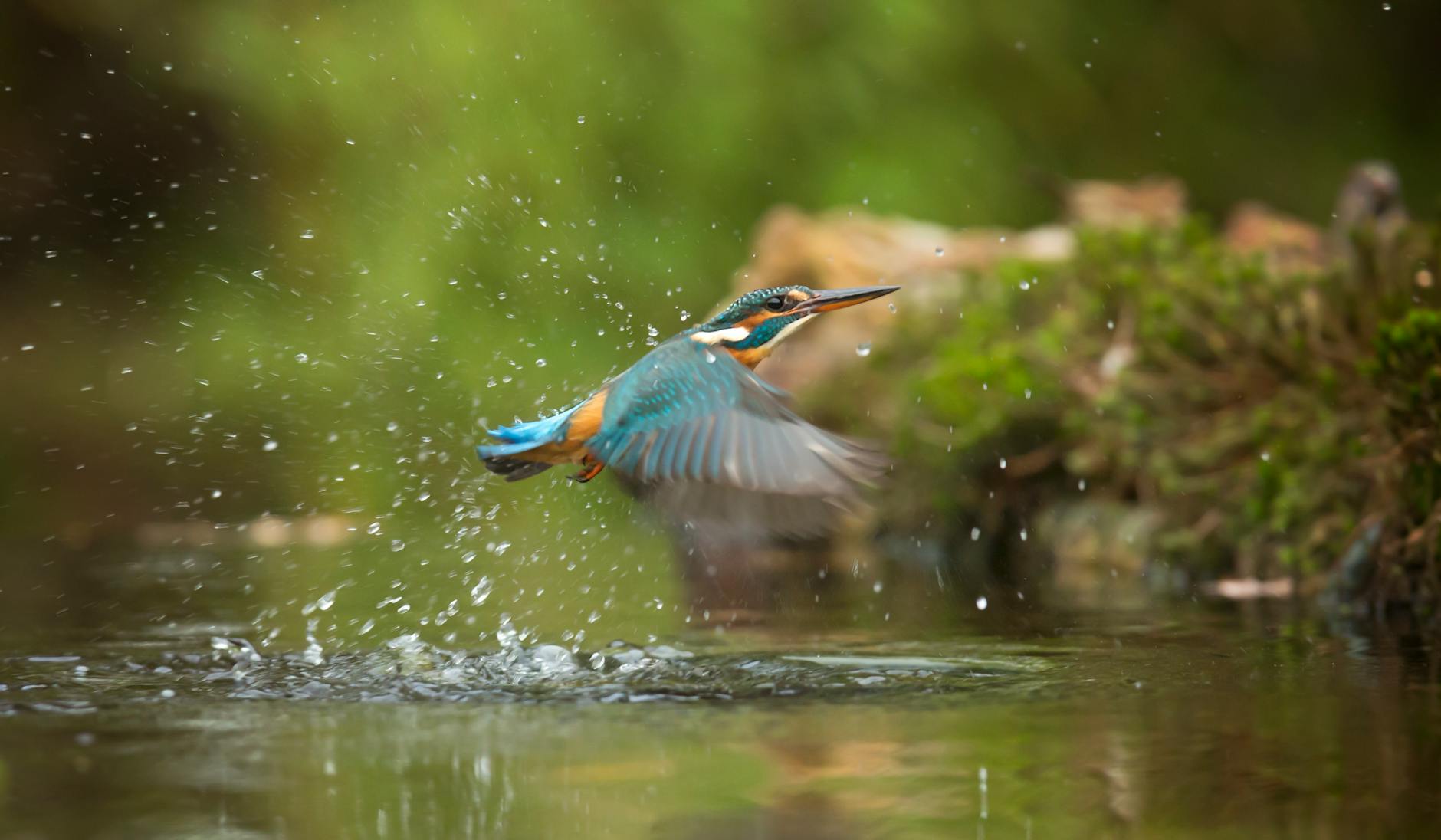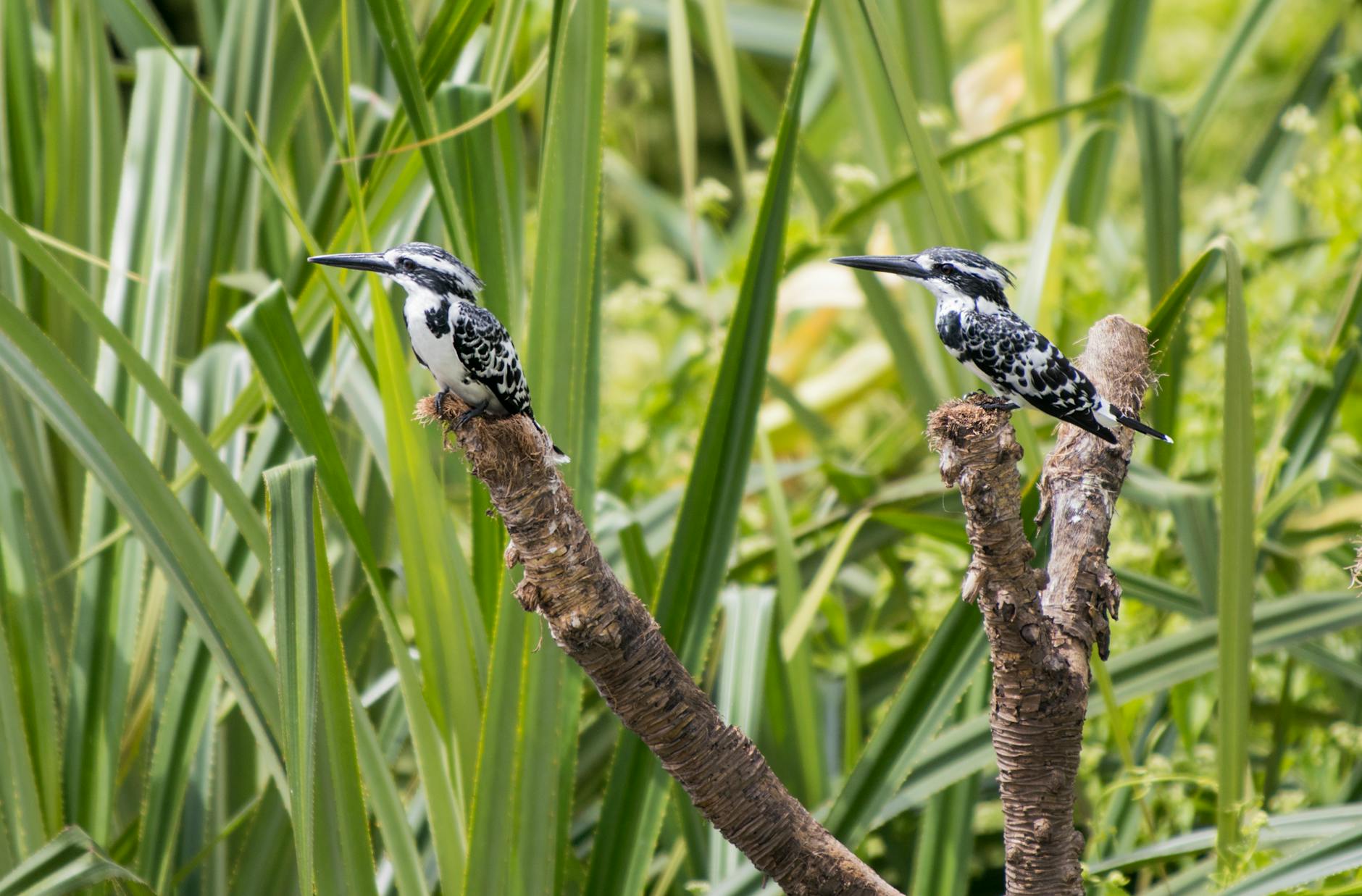Kingfisher Nests: Where They Build and How They Do It
Kingfishers are fascinating birds, well-known for their vibrant plumage and impressive fishing skills. But what’s equally intriguing is how they build their nests. Unlike many birds, kingfishers dig tunnels into riverbanks or sandy slopes, creating a secure home for their eggs.
These nests can extend up to 15 feet long and usually end in a spacious chamber, ensuring safety from predators. This unique nesting behaviour not only plays a crucial role in their breeding success but also connects them closely to their aquatic habitats.
In this post, we’ll explore where kingfishers choose to nest, the materials they use, and the process they follow. You’ll gain insight into their fascinating world and learn why understanding their nesting habits matter for their conservation.
Overview of Kingfisher Species
Kingfishers are a diverse group of birds that inspire awe with their striking colours and remarkable behaviours. With nearly 100 species distributed across various regions, these birds predominantly thrive near water sources. Their adaptations for hunting include sharp, dagger-like beaks and exceptional eyesight, making them proficient fishers. Among these species, the Belted Kingfisher stands out due to its distinctive features and unique habits.
Main Species of Kingfishers
Kingfishers belong to three families: Alcedinidae, Halcyonidae, and Cerylidae. Each family comprises various species, but they all share common traits—a love for aquatic environments and a diet primarily consisting of fish.
- Common Kingfisher (Alcedo atthis): Recognisable by its vibrant blue and orange plumage, it’s often spotted near rivers and lakes.
- Pied Kingfisher (Ceryle rudis): This species is notable for its striking black-and-white pattern and is often found hovering over water bodies.
- Great Blue Kingfisher (Halcyon mysola): A large, brightly coloured species, it prefers coastal habitats and is known for its loud calls.
For further details on the various species of kingfishers, you can check this link: Kingfisher | Types, Habitat & Diet.
The Belted Kingfisher
The Belted Kingfisher (Megaceryle alcyon) is particularly interesting. It’s easily recognised by its shaggy crest and the bold blue-grey band across its chest. With a body length of about 28–35 cm, this bird has striking features that make it stand out in its habitat.
- Diet: Predominantly feeds on small fish but will also consume crustaceans and amphibians. Its hunting technique involves diving headfirst into water.
- Habitat: Prefers freshwater lakes and rivers, often seen perched on branches or hovering as it searches for prey.
To learn more about the Belted Kingfisher, visit: Belted Kingfisher – All About Birds.
 Photo by Mauriciooliveira109
Photo by Mauriciooliveira109
By understanding the various species of kingfishers, including their unique traits and habitats, we can appreciate the incredible diversity of these birds. As we delve deeper into their nesting behaviours, it’s important to remember how their environment influences their survival and reproduction.
Kingfisher Nesting Locations
Kingfishers are precise when it comes to choosing their nesting spots. Their preference for specific habitats plays a crucial role in their breeding success. Let’s explore their favourite locations and the characteristics that make them ideal for nesting.
Riverbanks and Lakeshores
Kingfishers thrive near water bodies, and riverbanks and lakeshores provide the perfect setting for their nests. These environments are rich in fish, which is their primary food source. The soft sediments of riverbanks and the lush greenery along lakeshores offer both shelter and suitable materials for digging.
The steep banks allow kingfishers to excavate long tunnels, creating safe spaces for their eggs and young chicks. These burrows are usually hidden from predators, making it easier for the birds to raise their young. You can learn more about their nesting behaviour and preferred habitats on Audubon.
Digging into Sandy Banks
Sandy banks are particularly favoured by kingfishers. This type of soil is easy to excavate, allowing them to create extensive burrows. A good nesting site has a mix of sand and less clay, ensuring stability and a good environment for eggs to develop.
When searching for a perfect location, kingfishers look for areas with vertical or steep banks. These characteristics not only aid in nest excavation but also shield the nest from floodwaters and rising tides. The suitability of sandy banks is highlighted in articles discussing their nesting habits, like Scottish Wildlife Trust.
Nest Proximity to Water
Being close to water is non-negotiable for kingfishers. These birds rely on aquatic environments for hunting. Nesting near water means they can swiftly dive and catch fish, bringing food back to their chicks without straying too far from the nest.
The success of their breeding efforts hinges on this proximity, as it ensures that both parent birds can access plentiful food sources. Kingfishers often choose nesting sites within a short flight distance from their hunting grounds, making the relationship between their nests and the water incredibly vital. Find more about their feeding habits at Animalia.bio.

Photo by Siegfried Poepperl
Kingfishers’ choices in nesting locations reveal a lot about their needs and behaviours. Understanding these preferences helps in conservation efforts, ensuring these beautiful birds have the right habitats to thrive.
Nest Construction Process
Kingfishers have a fascinating process for building their nests. They are skilled excavators, utilising the right techniques to create safe havens for their eggs. Let’s break down the steps involved in their nesting construction.
Digging the Tunnel
To begin, kingfishers select a suitable nesting site, usually along riverbanks or sandy slopes. Once a location is chosen, they start digging. Their powerful beaks and strong bodies allow them to excavate effectively, creating a long tunnel that can reach lengths of up to 15 feet. This process typically takes several days, with both male and female kingfishers participating equally.
The digging technique involves a combination of pecking and shovelling with their beaks. The soft earth of sandy banks makes the work easier, enabling them to carve out the tunnel efficiently. This underground passage provides a layer of protection against predators and environmental elements. For more details on their nesting behaviour, check out this article from Audubon.
Creating the Egg Chamber
At the end of the tunnel, kingfishers create a spacious egg chamber. This area is wider and more rounded, providing ample space for the eggs. The chamber’s design is crucial; it keeps the eggs safe and insulated. The kingfishers lay their eggs directly on the bare ground of the chamber, relying on its shape to help retain heat.
Interestingly, the egg chamber is typically positioned above water level, to protect from potential flooding. The precise placement of the chamber plays a key role in the survival rates of the chicks. Understanding this structure is essential, as it influences the breeding success of kingfishers.
Nesting Materials
While the primary nesting structure consists of the tunnel and chamber, kingfishers do incorporate some materials. They often use bits of fish bones and other organic matter. This unique choice of lining helps provide warmth and some level of comfort for the eggs. The use of fish bones is especially notable; it may also deter predators due to the strong scent.
Interestingly, kingfisher nests are sometimes considered to be the “stinkiest nursery in the world”, as the combination of decaying materials can create a pungent environment. This unconventional choice may seem odd, but it serves practical purposes, helping to create a suitable nesting environment.
Kingfisher nesting behaviour showcases their adaptation to specific habitats and needs. The careful construction of their nesting tunnels and chambers is a testament to their commitment to ensuring the safety of their young. For further reading on kingfisher nesting materials, visit Audubon.

Photo by Monique Laats
Reproduction and Raising Young
Understanding the reproduction and nurturing practices of kingfishers adds another layer to their captivating behaviours. From laying eggs to caring for their chicks, these birds display strong parental instincts that contribute to the survival of their species.
Egg Laying and Incubation
Kingfishers generally lay between 2 to 10 eggs, with an average clutch size of 3 to 6 eggs. The eggs are typically white and smooth. Once all eggs are laid, both parents take turns incubating them. The incubation period ranges from 22 to 24 days, depending on the species. The female usually incubates the eggs at night, while the male tends to watch over them during the day, ensuring their safety from potential threats. Both parents are actively involved in providing warmth and care during this crucial stage.
Interestingly, the timing of hatching is precise. The first egg usually hatches about 20 days after the last egg is laid, giving the young chicks a synchronised start in life. This well-coordinated effort lays the groundwork for strong family dynamics. For more information about kingfisher egg laying and incubation, check out this San Diego Zoo article.

Photo by Kristina Paukshtite
Feeding the Chicks
Once hatched, kingfisher chicks depend entirely on their parents for food. Both mum and dad work tirelessly to sustain their young, catching small fish throughout the day and bringing them back to the nest. Remarkably, they can fetch and deliver up to 100 fish a day!
The process is quite efficient; the parents meet the nutritional needs of their chicks by providing freshly caught fish, ensuring they grow strong and healthy. The chicks remain in the nest for around 27 to 29 days before they are ready to fledge, meaning they’ll stick around for several weeks, receiving care and nourishment from their parents.
During this time, the chicks develop quickly, often calling for food until their needs are met. It’s fascinating to see how devoted these parents are, showcasing teamwork and commitment. You can learn more about how kingfishers feed their chicks from this BBC news article.
Kingfishers exhibit remarkable reproductive behaviour and parental care, emphasising their adaptability and resilience. Understanding these aspects allows for a better appreciation of their role in the ecosystem and highlights the importance of protecting their habitats.
Challenges Faced in Nesting
As kingfishers embark on their nesting journey, they encounter several challenges. Understanding these threats can shed light on the delicate balance of their ecosystems and the importance of their habitats.
Predators: Identify common predators that threaten nests
Kingfisher nests are at risk from various predators. These threats can significantly impact their nesting success. Common predators include:
- Birds of Prey: Hawks and owls are known to prey on both adult kingfishers and their young. They often patrol the nesting areas, seeking out vulnerable birds.
- Mammals: Foxes, raccoons, and feral cats pose threats by raiding nests to consume eggs or chicks. These mammals can quickly decimate a nest if spotted.
- Snakes: Various snake species may infiltrate nests, especially if they are located in easily accessible areas. Snakes can consume eggs or young birds before they’ve hatched.
- Larger Fish: In some cases, large fish may attack unattended young kingfishers if they venture too close to the water.
Due to their nesting behaviour, which involves digging into banks, kingfishers must remain vigilant. Nest site characteristics contribute to vulnerability; for instance, shallow or less steep banks may expose nests more to predators. For a deeper dive into the threats faced by the Belted Kingfisher, check out this Belted Kingfisher Life History.

Photo by Ramesha Sheshachala
Habitat Destruction: Explain how loss of habitat impacts kingfisher nesting
Habitat destruction poses a significant threat to kingfishers and their nesting success. As urban areas expand and natural landscapes shrink, kingfishers lose essential breeding grounds. Here’s how habitat loss impacts these birds:
- Nest Sites: Kingfishers rely on specific environments like riverbanks and sandy slopes to excavate their nests. When these areas are developed for infrastructure or agriculture, suitable nesting sites dwindle.
- Food Availability: Healthy aquatic ecosystems support the fish populations kingfishers depend on. Pollution and habitat modification often lead to declines in fish populations, making it harder for kingfishers to find food for themselves and their young.
- Increased Competition: As kingfishers lose their natural habitats, they may have to compete with other bird species for the remaining resources. This competition can strain their populations and lead to decreased successful nesting rates.
Ultimately, the destruction of riparian habitats affects not only kingfishers but also the entire ecosystem. Understanding these challenges is crucial for conservation efforts aimed at preserving their natural habitats. Further information on the ecological impacts of habitat loss can be found in this article from Animal Diversity Web.
Conservation Efforts
Recognising the importance of preserving kingfisher habitats, various conservation initiatives are underway. These efforts aim to ensure that kingfishers have safe nesting sites and healthy environments to thrive. Let’s explore some of the local and global initiatives dedicated to protecting these beautiful birds.
Local and Global Initiatives
Several conservation programmes specifically target kingfisher habitats. These initiatives focus on habitat restoration, protection, and research, ensuring that kingfishers can continue to nest successfully.
- Guam Kingfisher Conservation: The Guam Kingfisher, also known as Sihek, has been part of extensive conservation efforts. Between 1984 and 1986, the Guam Bird Rescue Project collected and transferred 29 birds to prevent extinction. The ongoing focus is on restoring their population and habitats. More details can be found at the Philadelphia Zoo.
- Sihek Conservation Projects: Various organisations are working toward restoring the Guam kingfishers to the wild. These efforts include habitat restoration and community involvement to create a supportive environment for their population. Explore these initiatives at The Wilder Institute.
- Tuamotu Kingfisher Case Study: The Tuamotu kingfisher faced severe threats due to habitat loss from hurricanes. Conservationists are working diligently to provide suitable nesting trees for this species. Find out more about the initiatives here: Tuamotu Kingfisher Conservation Case Study.
Engaging in these programmes not only aids kingfishers but also supports entire ecosystems. As communities come together to rally around these birds, we witness the positive impacts that targeted conservation initiatives can have.

Photo by Catherine Sheila
Role of Community Involvement
Local communities play a pivotal role in conservation efforts. Their participation can significantly enhance the success of initiatives aimed at protecting kingfisher habitats.
- Local Knowledge: Communities possess valuable insights about local ecosystems. This knowledge is essential in shaping conservation strategies that are effective and sustainable. For an in-depth look at how local communities contribute to wildlife conservation, you can visit Wild Team.
- Active Participation: Engaging community members in restoration projects fosters a sense of ownership and responsibility. When individuals understand the significance of their environment, they are more likely to protect it. Initiatives such as community clean-ups and habitat restoration directly benefit kingfishers.
- Long-Term Sustainability: Community-led conservation efforts often prove more sustainable because local people are invested in preserving their environment. The World Bank highlights that involving communities can lead to long-lasting protective measures for wildlife.
When communities rally together, they can create a powerful force for conservation. Their involvement enriches the efforts to protect kingfishers and fosters a commitment to preserving the natural world for future generations.
Conclusion
Protecting kingfisher nesting sites is essential for maintaining biodiversity in ecosystems. These striking birds rely on specific conditions and habitats to thrive, which also support a range of other wildlife. By ensuring kingfishers have safe nesting environments, we contribute to the health of aquatic ecosystems and the species that inhabit them.
Encouraging conservation efforts not only helps kingfishers but reinforces the importance of clean waterways and healthy habitats.
How can you support local wildlife and promote awareness of kingfishers’ needs? Your involvement could make a significant difference in preserving their future.










